Art World
Artist Amalia Pica Transforms Her Son’s Colorful Scribbles Into Intricate Embroideries
The Argentinean artist's works are on view in her New York solo debut "Aula Expandida" at Tanya Bonakdar Gallery.
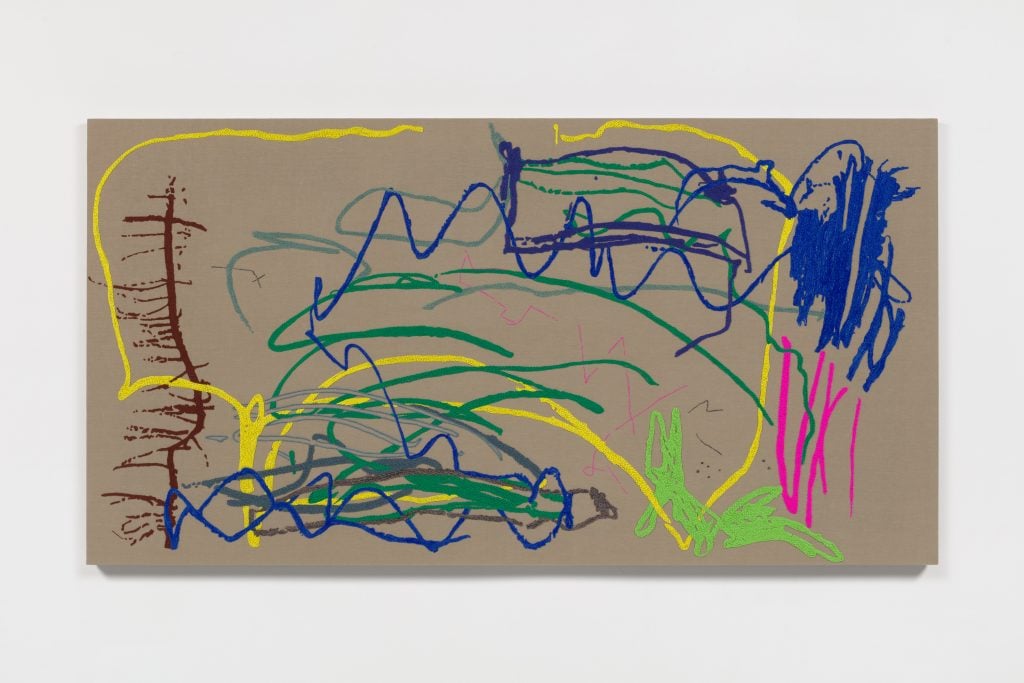
The Argentinean artist's works are on view in her New York solo debut "Aula Expandida" at Tanya Bonakdar Gallery.

Katie White

Amalia Pica believes children’s play can teach artists a lot about free expression.
In the Argentinean artist’s New York solo debut “Aula Expandida” now on view at Tanya Bonakdar Gallery (through April 4), Pica has delved into this open-ended world where play, language, and art collide. In a new series, entitled “Keepsakes,” Pica has painstakingly translated several of her young son’s colorful drawings—made when he was between three and four years old—into large-scale, intricate embroideries.
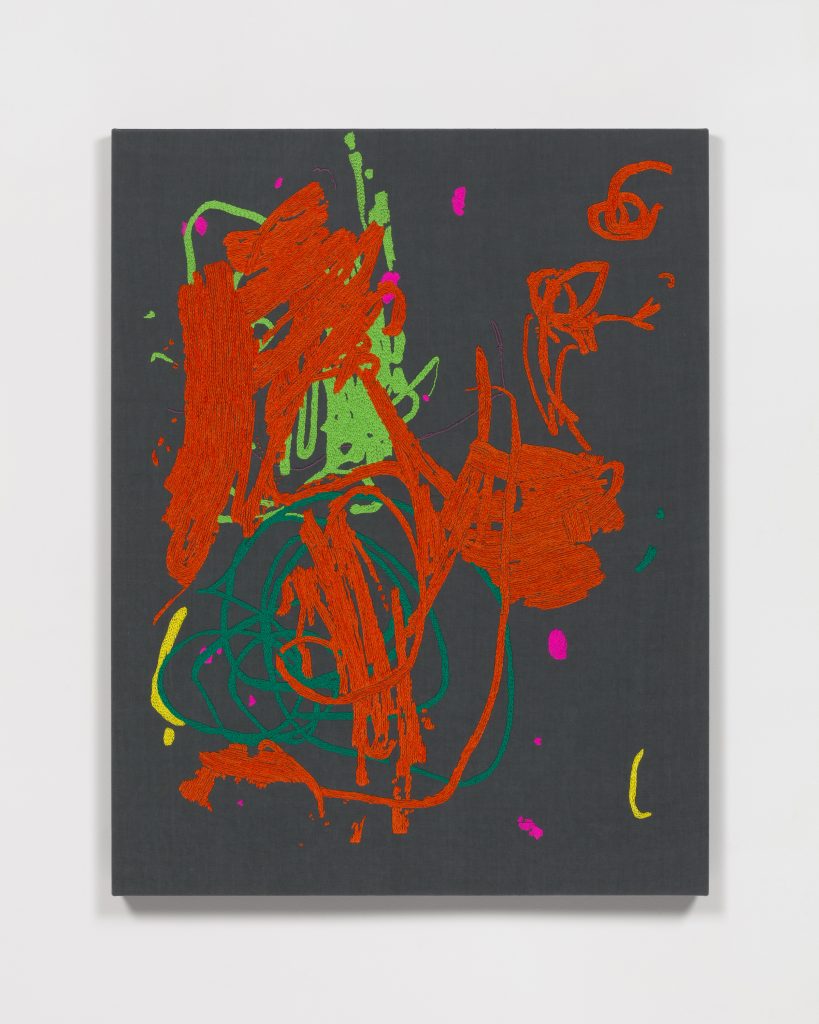
Amalia Pica, Keepsake #4 (2024). Courtesy of Tanya Bonakdar.
Pica takes an observational approach to imagery, time, and expression in these works. “My son is always asking me to draw a car, a bus, an octopus. I tell him he doesn’t need me to do it. As a former primary school art teacher, I know that it’s better to let children find their own ways of representing things. Or to let them find a way of drawing that isn’t about representing anything,” Pica explained. “I loved how free his drawings were, too, but slowly I began to notice that he was trying to draw the ways he’s ‘supposed to’—that he’s picking up ideas at school or from friends. I wanted to keep hold of that moment before representation where there is just freedom of mark-making.”
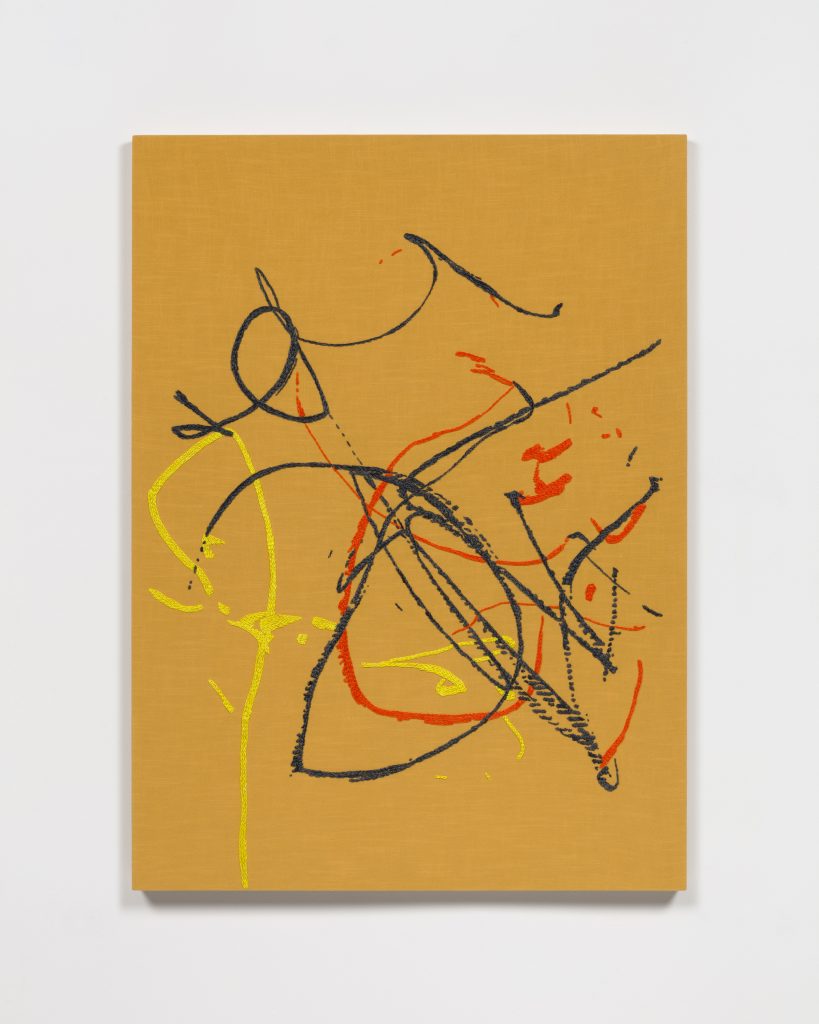
Amalia Pica, Keepsake #3 (2024). Courtesy of Tanya Bonakdar.
To create the embroideries, Pica projected her son’s drawings to a large scale and traced the images with markers. Pica timed herself as she began embroidering—and realizing the enormity of the project—she enlisted a few friends to collaborate with her. “We worked on one mark each so that we could all embroider the pieces. It’s a collaborative project even if you don’t notice different hands,” she said.
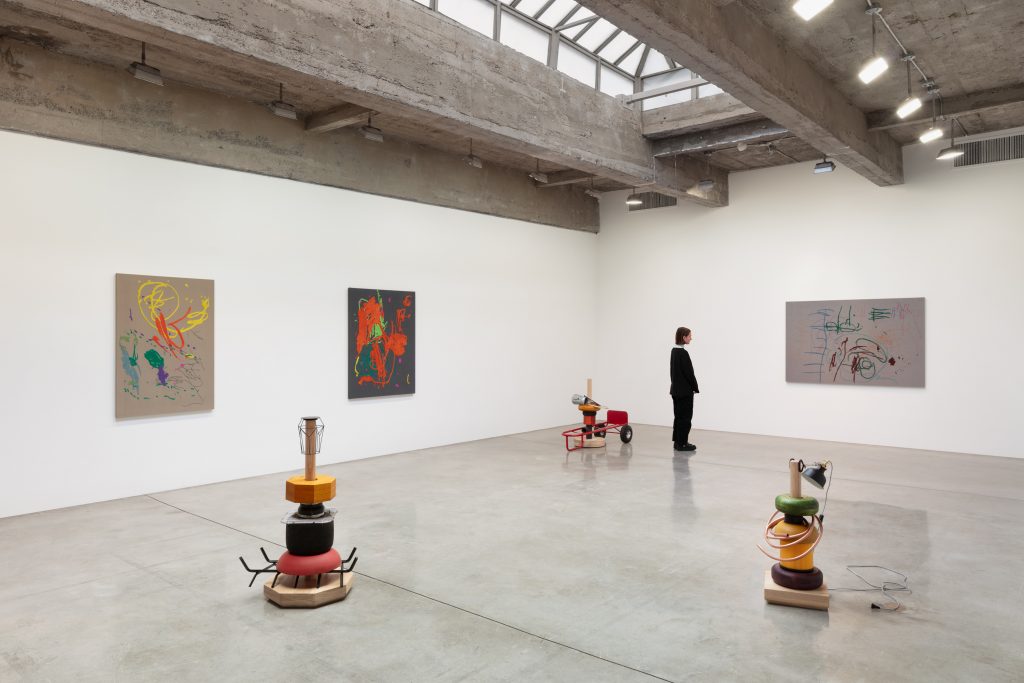
Installation view “Amalia Pica: Aula Expandida” 2024. Photo: Pierre Les Hors. Courtesy of the artist and Tanya Bonakdar Gallery.
The title “Keepsake” hints both at the Pica’s sentimental attachment to the original drawings as well as their connection to a specific point in time. Through the act of stitching, Pica embeds time into the works themselves, a metaphor both for parental labor and the desire to suspend time.
“I started thinking about how children move so fast through the different stages, but you want to hold onto them. Part of the work is from artistic education and the forming of imagination, but another part comes from parenting—these very quick gestures become something you treasure. There is a tension between how quick the gestures are for my son to make and how slow these embroideries were for me,” she explained.
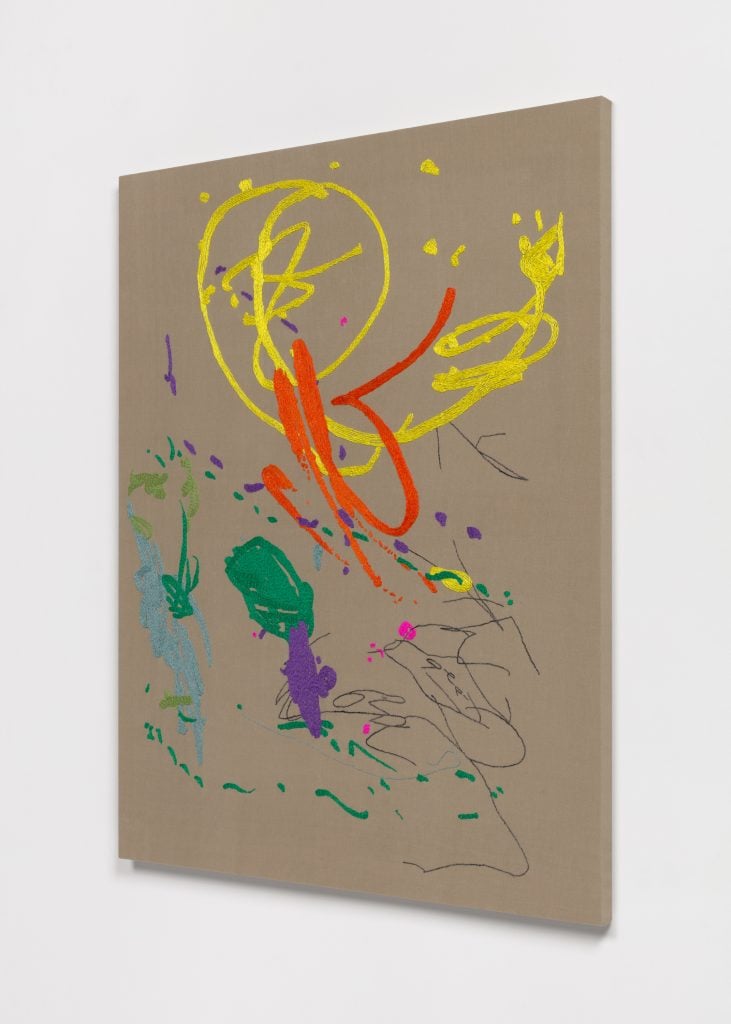
Amalia Pica, Keepsake #4 (2024). Courtesy of Tanya Bonakdar.
The embroideries are, in their final forms, both playful and considered. Scribbles of color are quickly energetic, but tactile and intentional in their making. Elsewhere in the exhibition, Pica presents sculptures, collages, and interactive installations that are purposefully open-ended and filled with the potent imaginative possibilities of childhood (the exhibition translates as “Expanded Classroom”).
“Play is very open and, in my practice, I like allowing myself the openness of being idea-driven, while allowing for formal experimentation to change the way that I look at a problem,” she explained. “It’s allowing thinking and making to influence each other. That is very much what children do during play.”
